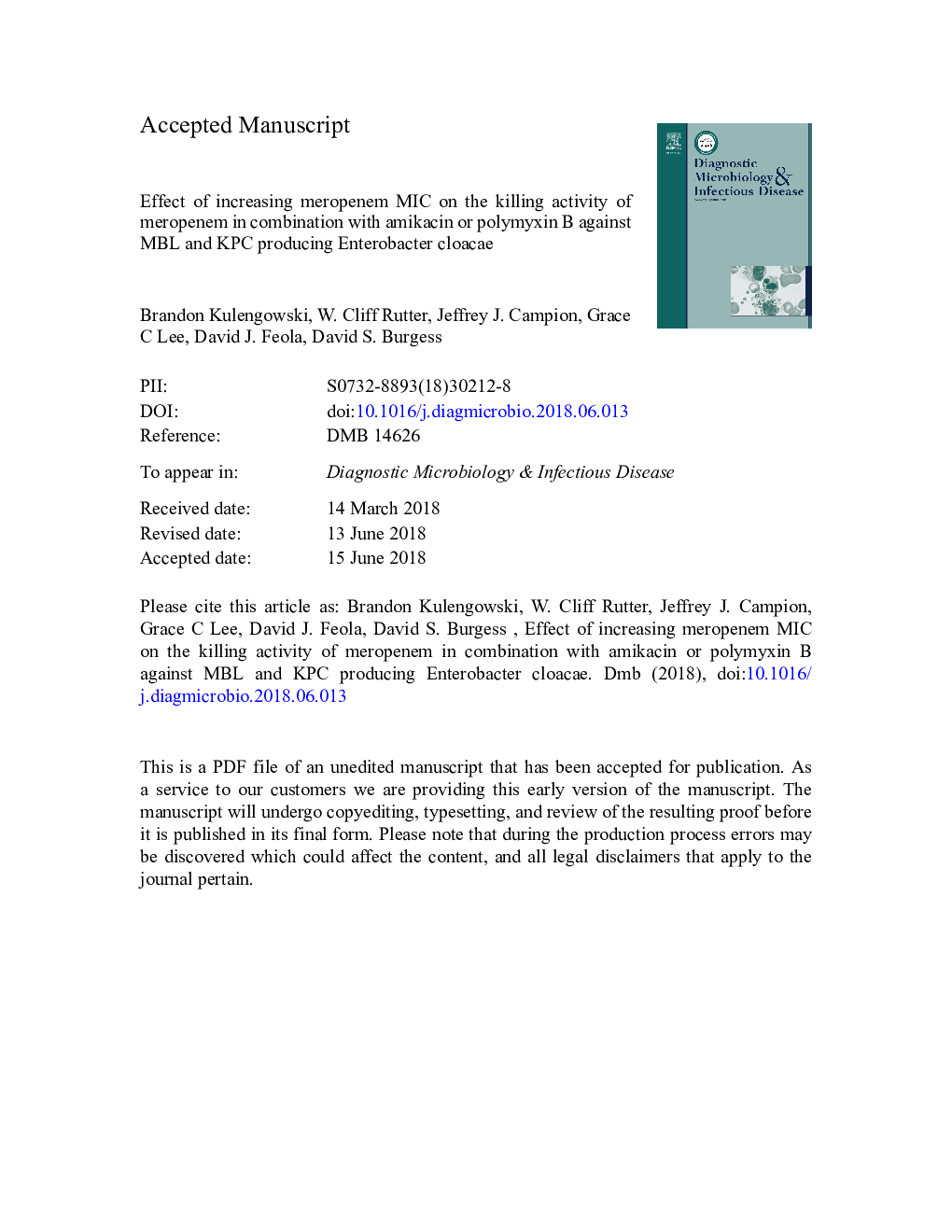| Article ID | Journal | Published Year | Pages | File Type |
|---|---|---|---|---|
| 11014250 | Diagnostic Microbiology and Infectious Disease | 2018 | 24 Pages |
Abstract
Carbapenem resistant Enterobacteriaceae (CRE) are a growing threat worldwide. Infections caused by these organisms have exhibited high rates of mortality (50%) for which there is no standard of care and a dearth of clinical trials. Most in vitro data on CRE focus on Klebsiella pneumoniae, but it is known that effective therapy may depend on species or even strain. To address this, meropenem, amikacin, and polymyxin B alone and in combination were evaluated by time kill against four carbapenem-producing Enterobacter cloacae clinical isolates representing a range of meropenem nonsusceptibility (2-32â¯mg/L) and resistance mechanisms (KPC 2 and/or VIM 1). As meropenem minimum inhibitory concentration (MIC) increased, bactericidal activity and synergy were maintained for 48â¯hours in isolates exposed to meropenem and amikacin, but synergy and bactericidal activity were not maintained in all isolates exposed to meropenem and polymyxin B.
Related Topics
Life Sciences
Immunology and Microbiology
Applied Microbiology and Biotechnology
Authors
Brandon Kulengowski, W. Cliff Rutter, Jeffrey J. Campion, Grace C Lee, David J. Feola, David S. Burgess,
